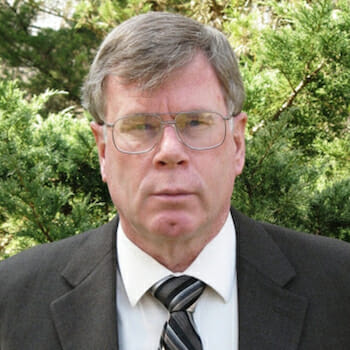
Will Rogers’ Assessment of Albuquerque Politics
“It’s the short memory of American voters that keeps most politicians in office.” A century after Will Rogers delivered that quip, it still reads like a dispatch from Albuquerque.
Mayor Tim Keller, now seeking a third consecutive term, has fashioned himself as the Gavin Newsom of New Mexico. His combination of sanctuary-city posture and constraints on policing, critics argue, has turned Albuquerque into a high-desert echo of Los Angeles and San Francisco.
In 2023, local coverage chronicled the surge in violence, “Under Keller, a 71% Homicide Surge Turns Albuquerque Into One of America’s Most Violent Cities,” as one headline put it. Last April, a single federal seizure of 2.7 million fentanyl pills underscored what law enforcement has long warned: given its proximity to the border and its position on the interstate grid, Albuquerque has become a redistribution hub for illicit drugs.
Keller insists that crime is falling on his watch. Reality suggests otherwise. Crime Explorer assigns Albuquerque an “F” across the major categories. Per 1,000 residents, violent crime is roughly twice the national average; property crime is also twice; homicide is more than triple; robbery is more than triple; and vehicle theft is more than five times the U.S. rate.
Voters don’t need to consult a think-tank white paper; they only need to recall September. Early in the month, police responded to a murder-suicide in Northeast Albuquerque.
On September 4, KOB reported that three Albuquerque schools were placed on “shelter in place.” One student’s weary reaction, “It happens almost every day, so we’re used to it by now,” captured the mood.
On September 7, an execution-style killing struck the area Keller brands the “International District” and most locals still call the “War Zone,” a neighborhood where cartel influence is hardly hypothetical. It looked like a targeted assassination.
On September 9, a suspect armed with a knife allegedly kidnapped a UPS driver and hijacked his truck along I-40. Deputies with the Bernalillo County Sheriff’s Office intervened, freed the driver, and recovered the vehicle.
On September 16, a dispute over two quarts of oil and a filter ended with two auto-parts employees being shot and killed.
That same day, a fire broke out at one of the mayor’s “affordable housing” projects, the San Mateo tower, forcing evacuations. What was supposed to be part of the solution to homelessness has become part of the problem: delayed completion, recurring disturbances, and, neighbors say, a hotspot for drug use, public indecency, and now fires.
Two days later, at that same address, police arrested a man wanted for setting a blaze at a department store miles away. It is a bitter comedown for the San Mateo Towers, once a showpiece of local banking and office life and now a byword for dysfunction in the “International District.”
Also on September 18, a father was shot to death by his son after the two smoked methamphetamine. Police responded to another killing that day, which is still under investigation.
On September 19, near the I-25/I-40 interchange, a New Mexico State Police motorist-assist revealed a stolen vehicle. The suspect, wanted on multiple warrants, tried to sprint across ten lanes of 65-mph traffic and was fatally struck, a grim “suicide by highway.”
Later on September 19, a drug deal gone wrong left a 17-year-old dead; police later arrested two teens.
This is not an exhaustive catalogue. Yet Keller’s refrain, that Albuquerque’s trajectory is improving, raises the obvious question: what Bizarro world is he looking at?
Under city rules, a candidate needs 50 percent of the vote to win outright. With six contenders in the field, a runoff looks likely—and it would probably pit Keller against former Bernalillo County Sheriff Darren White. Given the scale of the public-safety crisis and the national currents feeding it, it may take a former sheriff to clean up what current leadership has let fester.
The San Mateo tower episode reads like a microcosm of the policy dilemma. Ambitious rhetoric about “affordable housing” collided with the realities of execution: project delays, frayed oversight, and the predictable magnetism of half-finished sites for trouble. “AFR: Fire at San Mateo tower forces evacuation of several people – KOB.com” is the sort of headline that, repeated often enough, conditions a city to expect disappointment. When, as prosecutors allege, another arson suspect tied to a separate blaze was found connected to the same address, the symbolism wrote itself: promises without delivery can ignite more than hope.
None of this absolves the structural drivers—border-adjacent trafficking routes, national trends in addiction and property crime, a post-pandemic disorder that cities across America are still trying to metabolize. But leadership is judged not only by what cannot be controlled, but by what can: clear priorities, consistent enforcement, and the political will to align rhetoric with results. On those measures, the Keller record is difficult to square with claims of progress.
The city’s future will be decided at the ballot box. One hopes Albuquerque’s voters, this time, won’t prove Will Rogers right. A city that remembers can demand better—and, with sustained pressure, get it. That is the hope worth carrying into November.
